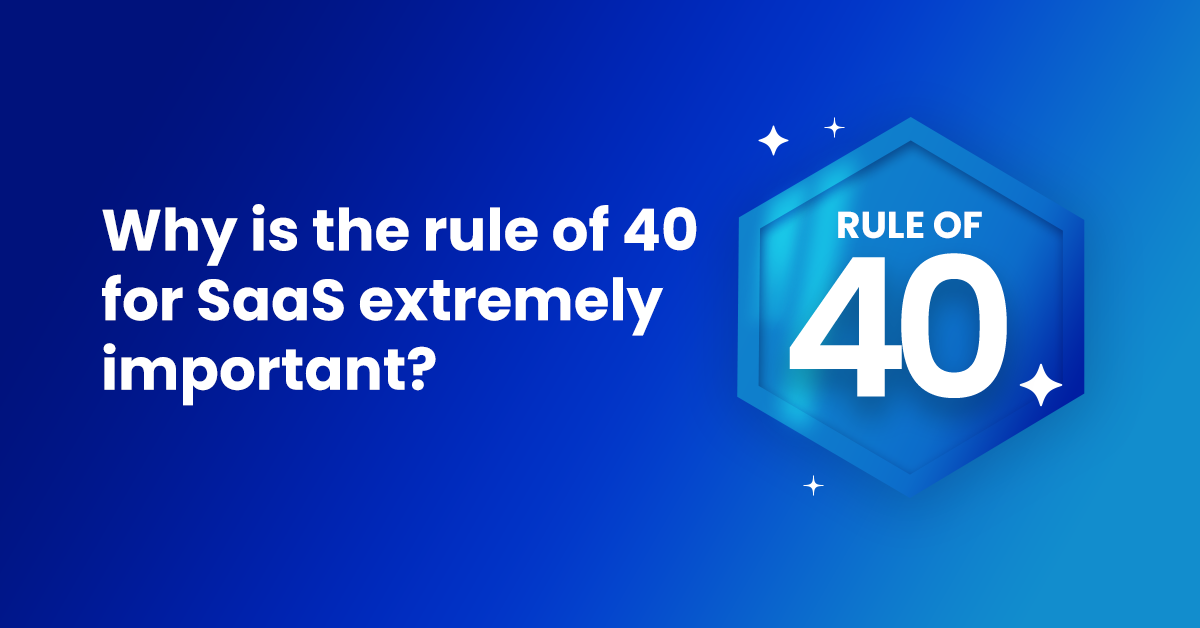Why is the rule of 40 for SaaS extremely important?
The rule of 40 is a crucial metric for evaluating the performance of software-as-a-service (SaaS) companies. The rule of 40 states that the sum of a SaaS company’s growth rate and gross margin should be around 40%. In other words, if a SaaS company grows at a rate of 30%, its gross margin should be around 10%. This metric is widely used by investors, analysts, and entrepreneurs to assess the health and potential of a SaaS business.
What is the rule of 40 for SaaS?
The rule of 40 is a metric used to evaluate the performance of software-as-a-service (SaaS) companies. It states that the sum of a SaaS company’s growth rate and gross margin should be around 40%. For example, if a SaaS company grows at a rate of 30%, its gross margin should be around 10%.
The rule of 40 is important because it measures the balance between revenue growth and profitability. SaaS companies often prioritize revenue growth in their early stages, but as they mature, it becomes important to focus on profitability for long-term sustainability. The rule of 40 helps ensure that a SaaS company grows quickly while maintaining a strong profit margin.
Investors, analysts, and entrepreneurs use the rule of 40 to assess the health and potential of a SaaS business. A company that exceeds the rule of 40 is generally seen as strong and attractive, while a company that falls below it may be considered problematic.
Why is the rule of 40 for SaaS extremely important?
The importance of the rule of 40 can be attributed to its ability to reflect the balance between revenue growth and profitability. In the early stages of a SaaS company, rapid revenue growth is often prioritized over profitability. However, as the company matures, it becomes increasingly important to focus on profitability to sustain long-term growth. The rule of 40 helps ensure that a SaaS company is growing at a healthy pace while maintaining a strong gross margin.
A SaaS company that exceeds the rule of 40 is generally considered to be in a good position, as it is growing quickly while also generating a healthy profit margin. On the other hand, a SaaS company that falls below the rule of 40 is often seen as a cause for concern, as it may be growing too quickly at the expense of profitability. In these cases, the company may be forced to slow down its growth to improve its margins and become more sustainable.
- The rule of 40 is particularly important for SaaS companies that are seeking to raise capital, as investors often use this metric to evaluate the potential of a business. A SaaS company that exceeds the rule of 40 is generally seen as a more attractive investment opportunity, as it has a strong balance between growth and profitability. On the other hand, a SaaS company that falls below the rule of 40 may struggle to secure investment, as investors may be wary of its lack of profitability and sustainability.
- In addition to its use as a key performance metric, the rule of 40 also serves as a useful benchmark for SaaS companies to assess their performance relative to their peers. By comparing their growth rate and gross margin to the rule of 40, SaaS companies can gain insight into how they perform relative to others in the industry. This can help them identify areas for improvement and make strategic decisions that will drive long-term growth and profitability.
- A SaaS company in the early stages of growth may prioritize revenue growth over profitability and, therefore, fall below the rule of 40. In these cases, it is crucial to assess the company’s performance in the context of its growth stage and its overall business strategy.
In conclusion, the rule of 40 is an extremely important metric for evaluating the performance of SaaS companies. It reflects the balance between revenue growth and profitability and helps ensure that a SaaS company is growing at a healthy pace while generating a solid gross margin. By using the rule of 40, SaaS companies can gain insight into their performance relative to their peers and make strategic decisions that will drive long-term growth and profitability.
It’s important to note that the rule of 40 is not a strict guideline, and there may be exceptions for certain SaaS companies. The rule should be evaluated in the context of a company’s growth stage and overall business strategy. However, The rule of 40 remains a valuable benchmark for SaaS companies to assess their performance relative to their peers and make informed decisions for long-term growth and profitability.



















